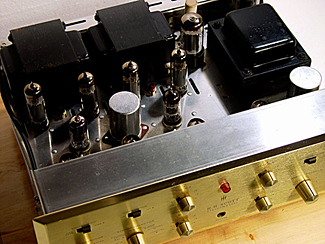
 Getting The Most Out Of Tubes
Getting The Most Out Of Tubes
• Almost all tube gear sounds better with the cage or cover removed. If you must use a cage, be aware that light mounting screw tension improves sound (don't overtighten).
• Cleaning oxidized tube pins (with OOOO steel wool, ink eraser or Flitz), as well as other connectors, always improves sound. Then applying SilClear quadruples the sonic gain.
• Tube gear vibrates a lot, particularly transformers AND tubes. Draining this internally-generated vibration yields surprisingly deeper, tighter bass, much more warmth and new levels of midrange/treble detail — as addressed by the next four bullets.
• Get rid of all rubber, plastic or spring feet; they trap vibration inside the component. Small wood buttons or blocks sound significantly better as feet. Best by a large margin are massive brass footers, preferably with sharp point contact top and bottom.
• Placing a really heavy wood platform — most preferably air dried maple and 2" to 4" thick — under the footers doubles their effect. On uncarpeted surfaces, mount the platform on IsoBlocks; on carpets use carpet-piercing footers.
• Weights placed on top of transformers and near tube sockets can add a lot to the already large improvements due to footers. The best sounding weights, by a sizable margin, are made of brass and sit on points, Apply weight in small increments; too much kills dynamics.
• Lightly clamping a bare metal hose clamp around a tube improves sound more than any soft ring damper. Even better, clamping with a massive full height brass collar yields significantly more sonic effect than the most expensive tube-rolling.
• Tube gear is very sensitive to AC cord quality. Fat AC cords exacerbate "tubey" (i.e., slow) bass. For home brew, two (or three, when using a ground) separated strands of 18 gage solid core sound very good indeed compared to most "hi end" AC cable. To hear something at least twice as good as 18 gage home brew, try Clearview Double Helix AC cords.
